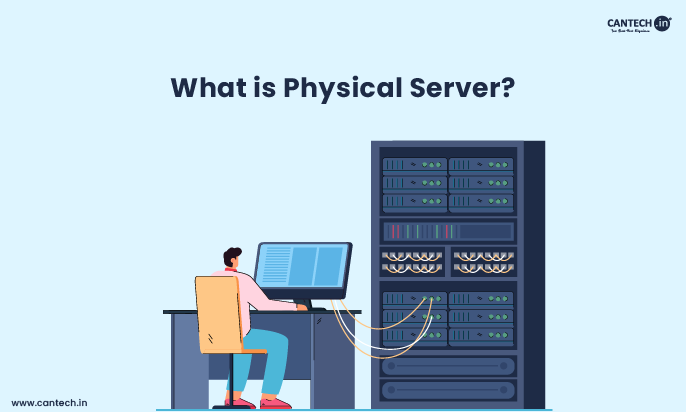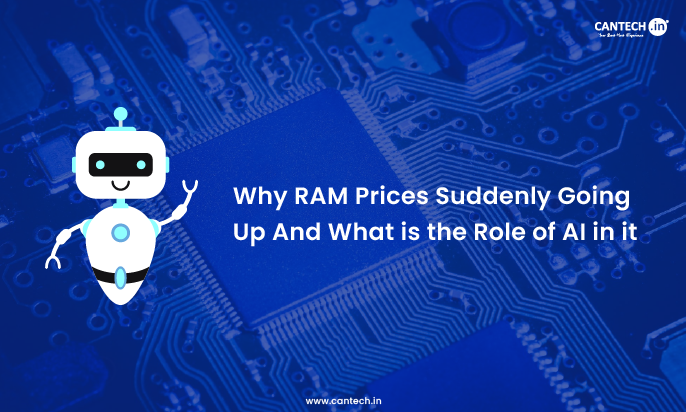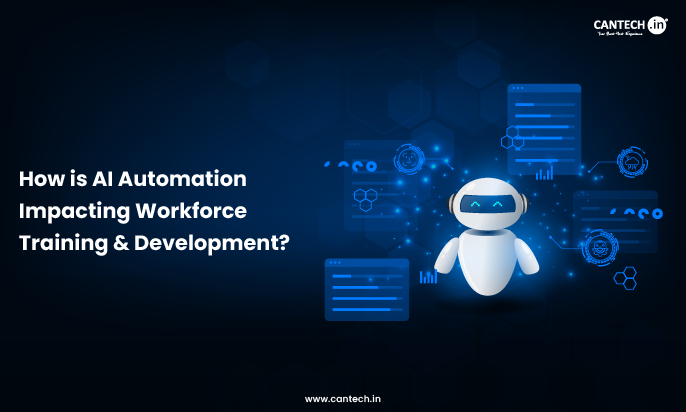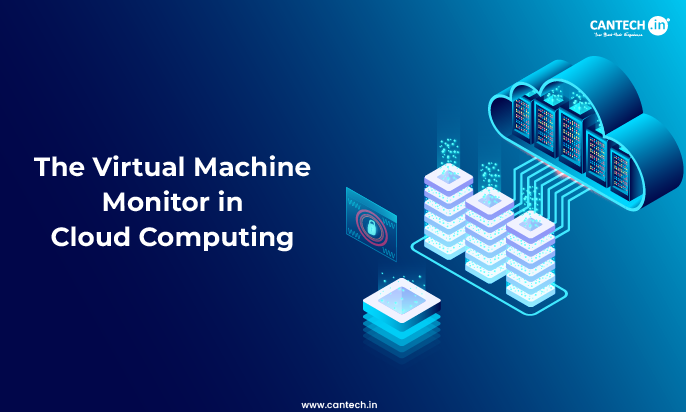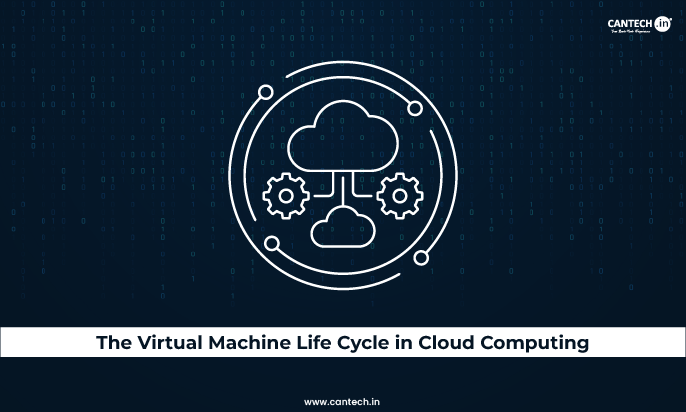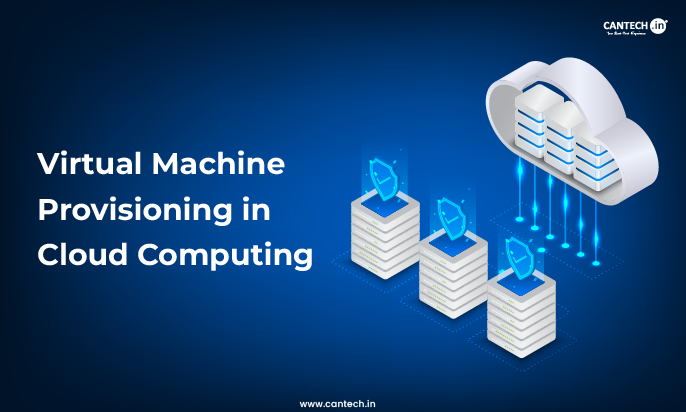If you’re starting out in web hosting, IT services, or in any related field, a server is among the first pieces of technology you will come across. While “cloud” and “virtual machines” may capture the most attention today, a great deal of infrastructure is still powered by unsung physical servers. Understanding these machines, whether called dedicated, hardware, or bare-metal servers, is crucial for businesses and IT experts.
In this guide, we aim to answer what a physical server is, how it compares to a virtual server, and when you should prefer one over the other. We will discuss what is a physical server, its architecture, support for different operating systems, main application scenarios, and its relevance in 2026.
Physical Server Definition: What is It?
A physical server, known as a bare-metal server or hardware server, is a computing machine that performs services such as running an operating system to provide networking resources to users or other computers.
A physical server focuses all its resources, CPU, RAM, storage, and bandwidth, on a single tenant or workload. Therefore, it is extremely powerful for big data processing, gaming servers, scientific computing, and high-traffic websites.
Physically servers are best explained as renting a house as opposed to an apartment in a building. Unlike the apartment, the house is entirely yours. No one will have access to the other space. That is what a physical server offers in the digital realm: complete domination, top performance, and refined control.
Evolving Meaning of Physical Servers in IT
In the early 2000s, physical servers were the only option available with every application, database, or file storage system having its dedicated machine. While these still provided ease of access and control, these systems became obsolete due to the introduction of virtualization technology. It enabled businesses to shift to virtual servers to save significant costs and space.
While these provided ease of access, control, and data retrieval, they came with additional vulnerabilities and a lack of security due to them being hosted virtually. While this shift was made for efficiency, the physical server still holds great importance as they offer unmatched power, security, and hardware customizations.
For businesses that need to run workloads involving high IOPS, require consistent performance over time, or must adhere to strict data privacy concerns, physical servers are critical.
Physical Server Components Overview
Having an understanding of what comprises a server helps appreciate its power and efficiency. Here is what a standard hardware server comprises at a very high level:
- Central Processing Unit (CPU): Normally supports dual socket configurations with server class processors like Intel Xeon or AMD EPYC capable of multi-threaded workloads and scalability.
- Memory (RAM): Can vary from 32GB to a few terabytes depending on the application/ use case.
- Storage: Utilizes enterprise SSDs or enterprise grade HDDs in RAID 0, 1, 5, 6, 10 for speed and redundancy.
- Motherboard and Chipset: Designed to be highly dependable and support multiple components.
- Cooling Systems: Industrial level fans or liquid cooler for thermal regulation.
- All these components are dedicated to the tenant using the server so there is no shared resource overhead unlike in virtual environments.
Importance of the Operating System
Like any computer, a physical sever requires an OS to operate. Depending on your workload, various options are available for installation:
- Linux Distributions (Ubuntu, CentOS, Debian, etc.): Usually preferred as web servers, databases, and development environments.
- Windows Server: Commonly encountered in organizations for software such as Microsoft SQL Server, Active Directory, and .NET applications.
- BSD or Unix: Occasionally selected for specialized enterprise network equipment or niche applications.
Since you are the sole user of the machine, you granted full root or admin privileges to the OS. This grants increased control on configuring firewalls, system libraries, application stacks, and even tuning the machine’s performance.
Dedicated Server vs. Bare-Metal Server
The terms dedicated server and bare-metal server are often used interchangeably with physical server. But are they really the same?
- Dedicated Server: A server provided by a hosting company and rented out to one client only. That means you do not possess the server, but you have complete utilization during the lease period.
- Bare-Metal Server: This serves to emphasize that no virtualization is employed. No hypervisor or virtualization layer is present; these servers operate directly on the hardware. Cloud providers have started leveraging bare-metal servers because of the flexibility of hardware provisioned through an API.
Essentially, bare-metal servers are a subset of physical servers. The distinction lies in context—when referring to servers outside the cloud environment, all physical servers are not labeled as bare-metal.
Physical Vs Virtual Server: Key Differences
Here are the key differences between physical server and virtual server explained briefly.
Performance and Resource Utilization
A physical server allocates hardware to a singular operating system, ensuring optimal performance as there is no hypervisor overhead for demanding applications. Businesses that need reliable performance often encounter these servers to avoid “noisy neighbor” problems.
On the other hand, physical servers tend to lead to inefficient resource utilization. When applications do not fully utilize the hardware, capacity is wasted leading to inefficient investment and energy. Physically scaling up or down is very slow and costly due to having to adding or removing hardware.
A virtual server runs several independent VMs through a hypervisor on a single physical server. Resource utilization greatly improves because multiple virtual machines can now dynamic share the physical servers resources. The reduction in hardware, power, and cooling costs consolidates greatly.
Workload performance overhead due to virtualization tends to be small, and is often negligible for most workloads. VMs offer great value when workloads fluctuate, giving flexibility to scale resources up or down without physically needing to do any work.
Cost and Scalability
The ongoing cost of power, cooling, maintenance, and rack space are greatly reduced. Scaling becomes easier because there’s no longer a need to buy new hardware, eliminating the need to physically install anything.
The costs incurred by underutilizing a physical server can be steep, particularly when examined on a per-application basis. For businesses that operate in rapidly shifting landscapes, the agility of physical servers is quite limited due to the upfront investment requirement and procurement time needed.
In comparison, virtual servers are a more economical long-term option. The consolidation of virtual machines onto fewer physical hosts drastically reduces expenses related to hardware, electricity, and cooling. Although there are software expenses, the initial investment is offset by the long-term savings garnered from the optimized hardware resource usage.
Virtual servers also hold a competitive edge due to their scalability. CPU and RAM resources assigned to virtual machines can be effortlessly adjusted via the hypervisor, thus circumventing the need for actual hardware. This flexibility is paramount for businesses, enabling them to seamlessly respond to shifting operational demands.
Management and Maintenance
Physical servers are usually managed on-site, which entails OS installation, patching, and troubleshooting at a granular level. Tasks such as hardware upgrades also incur server downtime, complicating remote maintenance. This unsynchronized approach increases the demand for IT staff and is tedious.
The recovery of physical servers from disasters is overly complicated alongside being time-intensive. Physical machinery is backup and restoration, lacking the graceful transfer capabilities of modern systems. This results in physically moving applications or data across servers becoming an intricate process.
Through the hypervisor, virtual environments enable centralized management, providing a single console from which multiple VMs can be controlled. This enhances workflows, automates processes, and minimizes manual work. Features such as live migration help with uptime maintenance by allowing the movement of VMs from one physical host to another.
With virtual servers, disaster recovery is significantly easier. The ability to snapshot, duplicate, and restore VMs allows for faster recovery and improved business operations. Migration of workloads to different hardware or cloud environments is also effortless due to the portability of virtual servers.
Security and Isolation
Bear physical servers have a high degree of isolation, running applications on dedicated hardware. Aside from running in isolation, no interference from other applications makes these an ideal solution for highly sensitive data or strict compliance needs. In addition, physical access control boosts security.
Nevertheless, a physical server creates a single point of hardware failure. Without adequate redundancy, inaccessible applications and data will result. Provided physical servers are numerous, securing them poses a complex and resource-heavy challenge.
Through the hypervisor, virtual servers create separate VM environments, permitting isolation. Although VMs utilize shared hardware, the hypervisor prevents one VM conflict from directly impacting another. This ensures good security and makes policy enforcement easier because hypervisor security management is centralized.
Read More: Difference between physical server and virtual server
When Should You Choose a Physical Server?
1. High Performance Requirements
Physical servers excel in high-performance computing tasks. The same applies to big data analytics, 3D rendering, machine learning, and even financial modeling. All these processes benefit from dedicated CPU and GPU resources as they become faster and more accurate.
These servers eliminate the latency and bottlenecks commonly found in virtual environments. In fact, these physically hosted servers enable more seamless operations, particularly in managing thousands of operations per second. This is crucial for success in real-time applications.
Businesses that depend on quick processing and steady results cannot be surpassed by the performance a physical server delivers.
2. Data Security and Compliance
With healthcare, finance, and government services, these industries are bound to mandatory data protection regulations such as HIPAA or GDPR. Physical servers provide complete data isolation and control which is fundamental for ensuring sensitive data is safe from external breaches and unauthorized access.
Since virtual servers operate on shared infrastructure, a physical server will allow your IT departments to apply customizable firewall rules, encryption protocols, and audit logs specific to regulatory requirements which enhances tailored surveillance.
This has a positive impact towards compliance audits and upholding credibility and confidence with stakeholders and customers. For larger companies, enterprise compliance automation can further support these efforts by monitoring regulations, reducing manual work, and maintaining consistent compliance, reinforcing stakeholder confidence.
3. Custom Hardware Configuration
With physical servers, you have full freedom on how to configure the hardware. You get to decide the number and types of drives, install powerful GPUs, or configure advanced RAID setups for better performance and redundancy depending on your specific needs.
Flexibility is critical when businesses require hardware accelerators for deep learning, real-time analytics, or complete environment virtualization.
You do not have to worry about a hypervisor’s compatibility with your bare metal hypervisor because cloud presets don’t exist. You configure what you want, need and how you want it.
4. No Noisy Neighbors
In virtual settings, other users on the same physical host can impact performance. This is referred to as “noisy neighbor challenge,” and can unpredictably impact the performance of your application.
A physical server ensures that every piece of hardware, including CPU cycles and memory bandwidth, are exclusively yours. Not sharing a server means no one else’s workload can compromise your server’s efficiency.
This makes physical servers ideal for mission-critical workloads where consistent performance is essential.
5. Legacy Applications
Some legacy applications were created before virtualization became commonplace. These systems often require direct hardware control or certain kernel settings that virtual servers specialized in cannot provide.
Meeting these requirements does not involve complex workarounds or compromise on performance with physical servers. You can install legacy operating systems and configure the hardware exactly as required.
This improves long-term operational stability and enhances the functional lifespan of outdated software systems that are still valuable.
6. Predictable Workloads
If processes are consistent in their output as well as intensive in their use of resources, physical servers might be the better investment over time. You avoid the unpredictable billing that comes with cloud-based or metered virtual environments.
Having a physical server offers and guarantees a fixed cost of purchasing and leasing, which streamlines performance expectations, budgeting, and forecasting for the IT and finance departments.
This consistency is crucial in supporting applications that have consistent, around-the-clock usage such as data centers.
Advantages of Physical Servers
1. Performance
The importance of performance when operating with physical servers allows for the superior qualitative and quantitative value when directly running on hardware as opposed to being layered with hypervisors and virtual machines. Efficiencies with intensive tasks, especially those requiring quick computation such as video rendering, running AI models, or querying large databases, can now be processed at greater speeds due to direct hardware engagement.
Furthermore, because there isn’t a need to share resources with other users as is the case in virtual environments, concerns such as “noisy neighbor” problems that affect performance do not arise. Businesses with high throughput requirements or those that need immediate processing capabilities often use physical servers to ensure consistent performance.
2. Reliability
Since the entire server is one application, physical servers are more reliable in providing consistent and predictable uptime. With no infrastructure to share, the chance of downtime from another user’s configurations or applications is absent, significantly increasing system reliability.
The system is easier to monitor and fix hardware problems. System administrators face fewer limitations from virtualized external activities and can precisely track system performance gaps and fix them in a timely manner.
3. Security
Irrevocable organization breaches of security policies set through OS-level gates can occur with shared hardware and software systems. Shared environments pose a risk through other tenants that render physical isolation useless, as there would be overlapping vulnerabilities.
This is crucial for healthcare, finance, and government institutions that deal with sensitive information that needs to be secured at all levels. Such organizations can place physical servers in locked down and secure facilities that control access and monitor traffic with proprietary firewalls and intrusion detection systems.
4. Customization
Physical servers offer thorough customization options with regard to both hardware and software. Businesses can select operating systems and BIOS settings alongside specific GPU accelerators as well as RAID levels they wish to configure.
This type of customization works best for developers or organizations working with legacy applications, proprietary platforms, or industry-specific workloads. With physical servers, there aren’t limitations placed by a hosting provider’s template or configuration which is the case with virtual servers.
5. Scalability
Scaling a physical server provides both pros and cons. Unlike more modern approaches, adding new hardware involves purchasing and installing it through manual effort. On the bright side, the predictability in regards to infrastructure growth is unparalleled which means no surprise billing.
Controlled scaling is ideal for long term projects which anticipate growth over time. It allows businesses to add resources in incremental steps while avoiding being locked to virtual server packages or licenses.
Disadvantages of Physical Servers
1. Cost
Investing in physical servers means substantial upfront spending owing to hardware, networking, and rack space. In addition to this, operational spending on cooling, electricity, and IT personnel also adds up quickly putting them at a disadvantage compared to cloud and virtual servers.
These expenses might be an overstretch for startups and smaller businesses with resource fluctuations. Here, virtual servers are a much better option since companies only need to pay for what they use and there are no capital expenditures.
2. Maintenance
Having physical servers means the company employs helpdesk staff which adds to the overall cost of physical servers. Maintenance tasks such as firmware updates, and part replacements need to be done manually.
Resolving issues involving hardware failure can be much more time consuming than in virtual environments where quick snapshots or virtual migrations offer faster recovery. Therefore, teams that lack a robust technical support structure would find it difficult to operate with physical servers.
3. Space and Power
Along with physical infrastructure like rack space and backup generators, physical servers also need uninterrupted power supplies (UPS) and cooling systems which need to be maintained to prevent overheating.
Furthermore, this type of spatial and energy demand can be challenging for lots of businesses. On the other hand, virtual environments hosted in cloud data centers do not need rack space or backup generators which the provider can shoulder.
Physical Servers in Cloud Environments
Surprisingly, numerous cloud service providers now provide bare-metal servers as part of their offerings. This allows clients to enjoy:
- Cloud flexibility coupled with physical performance.
- API-driven Server provision without the overhead of virtualization.
- Hybrid models that combine physical servers alongside virtual and containerized services.
- IBM Cloud, Oracle Cloud, and AWS with its EC2 Bare Metal instances are some of the more well-known providers in this space.
How to Choose the Right Server Type for Your Business
Before selecting a physical or virtual server, consider asking yourself these questions:
- Which workloads do I intend to execute?
- Is high availability and data compliance vital?
- How skilled is my IT team?
- Stability or agility, what do I prefer?
- Is the hardware cost reasonable based on the performance requirements?
There is a growing preference for hybrid models, notably where primary functions are based on physical servers, and elastic workloads expand through virtual machines.
Final Thoughts
While the cloud-native application, container, and serverless computing landscape changes rapidly, the reliable physical server remains steadfast. The decision is not between newer or older tech, but instead, what serves your needs best.
Grasping IT concepts involves lots of physical servers, from the OS control and dedicated server reliability to a hardware server’s performance edge and its cost trade-offs.
When designing your infrastructure or comparing hosting options, keep in mind that while the definition of physical server may seem old, its importance in today’s technology world is certainly not obsolete.
FAQs
What is a physical server and how is it different from a virtual server?
A physical server is a standalone hardware machine allocated to a single user or workload with absolute control over its resources. A virtual server, on the other hand, is created through virtualization technology and shares hardware with other virtual servers. Unlike physical servers, virtual servers have shared resources which impact performance and security.
In which scenario should a business consider a physical server over a virtual server?
Adhering to strict data security policies will be easier with a physical server as it offers full customization and stronger performance. This is also best for businesses that require the use of outdated software that cannot run on virtual spaces. Predictable resource-heavy workloads will find long-term ROI coming from physical servers.
What are the key benefits that can be obtained with physical servers?
Having a physical server guarantees unmatched superior performance, full administrative control over the OS, and increased dependability through dedicated hardware. Other benefits include customizable hardware which eliminates the issue of “noisy neighbors.” Above all, mission-critical applications that prioritize speed and security the most work best with physical servers.
Are physical servers safer compared to virtual servers?
Absolutely, physical servers tend to be more protected as they come with hardware isolation and lack exposure to multi-tenant vulnerabilities. Firewalls, data encryption, and access control at the Operating System level can be managed completely. These features make physical servers ideal for businesses dealing with highly sensitive information and with regulatory compliance obligations.
Is it possible to have physical servers in a cloud environment?
Of course. There are a myriad of modern cloud providers that offer bare-metal servers, which are the fusion of physical machines and cloud flexibility. This innovation enables businesses to automate their deployments, scale infrastructure, all while providing the business the raw power and exclusivity of a physical machine.
